An Exclusive Interview With
BRICE GELOT
By Ariel SU

“Nothing’s more interesting than reality. So from rough areas that never see tourists to poor neighborhoods where I can Find chaos, I Find beauty. I let the street speak, and I just document what I see….”
-Brice Gelot
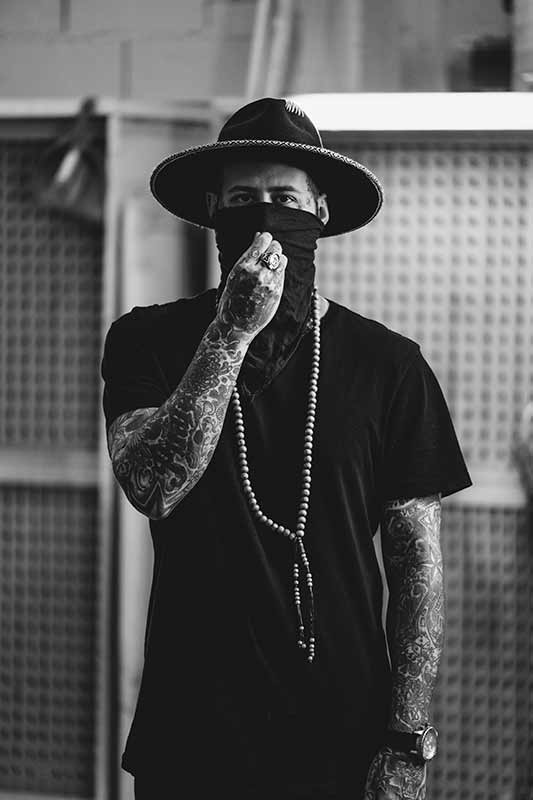
Brice Gelot is a French-based street and documentary photographer who explores forgotten societies and hidden and dark places. He is best known professionally as NSD51/50 and exhibited at international art fairs and group exhibitions worldwide, including at the Biennale Artbox Expo in Venice, Italy, at the Diviowl Gallery, Dijon, France, and in 2023 we expect to see his work at the Artbox projects presented during the Miami Art Basel week, FL, USA.
Starting his journey in photography in 2004, Brice Gelot used a Canon A-1 to learn film photography with the urge to share stories and show various perspectives and ways of seeing the world.
Gaining a solid reputation for his raw photographic style, Brice Gelot captures the essence of street life through his vision and uses his camera to speak the truth. His work has been featured in magazines and art galleries. His photographs usually reflect the street, graffiti, tattoo culture, gangs, and the dark side of our society. He isn’t documenting as an outsider but immersed in this lifestyle himself.
“I have always been influenced by all of this culture. I like to show the world as it is”
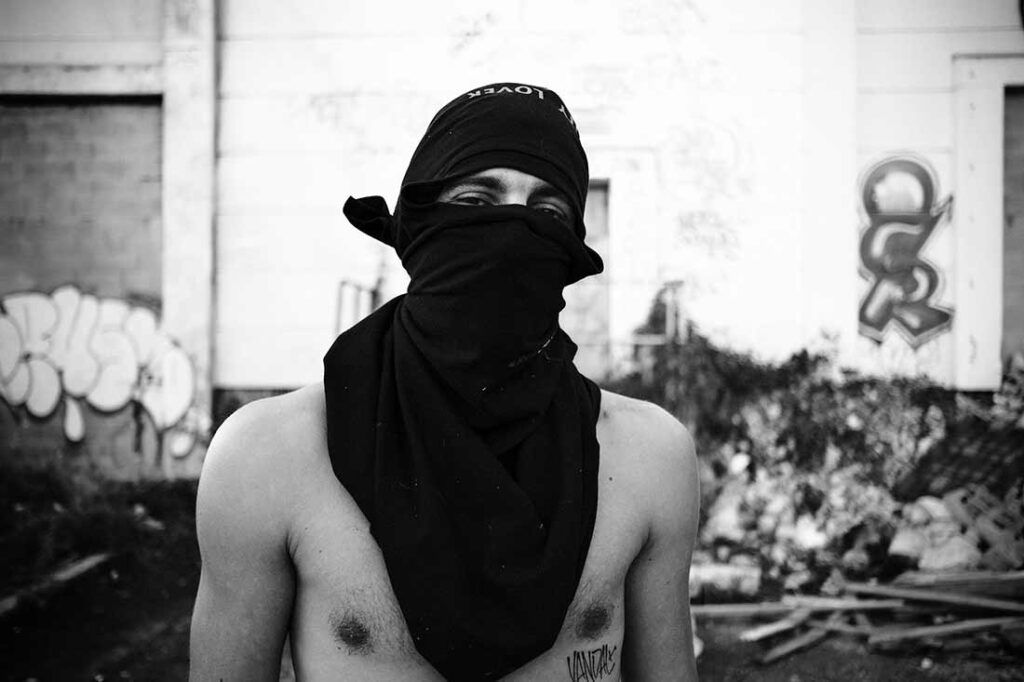
An Exclusive Interview With
BRICE GELOT
By Ariel SU
Lens Magazine: It is a pleasure to feature an interview with you, Brice Gelot; we were very impressed by your work. You went deeply into the street culture, being involved and creating trusted relationships with people in these gangs.
Can you tell us how it all started? What drew you to photography, and did you grow up in an artistic environment?
Brice Gelot: Everything started in 2004; at the beginning, I took photographs of my friends doing skateboarding, then I came to work and took pictures for the local skate shop in my town and slowly became recognized by magazines and brands. I guess it’s how I started my career. I didn’t grow up in any artistic environment; I am a self-taught artist and the only one in the family; never been to any art school or photography school.
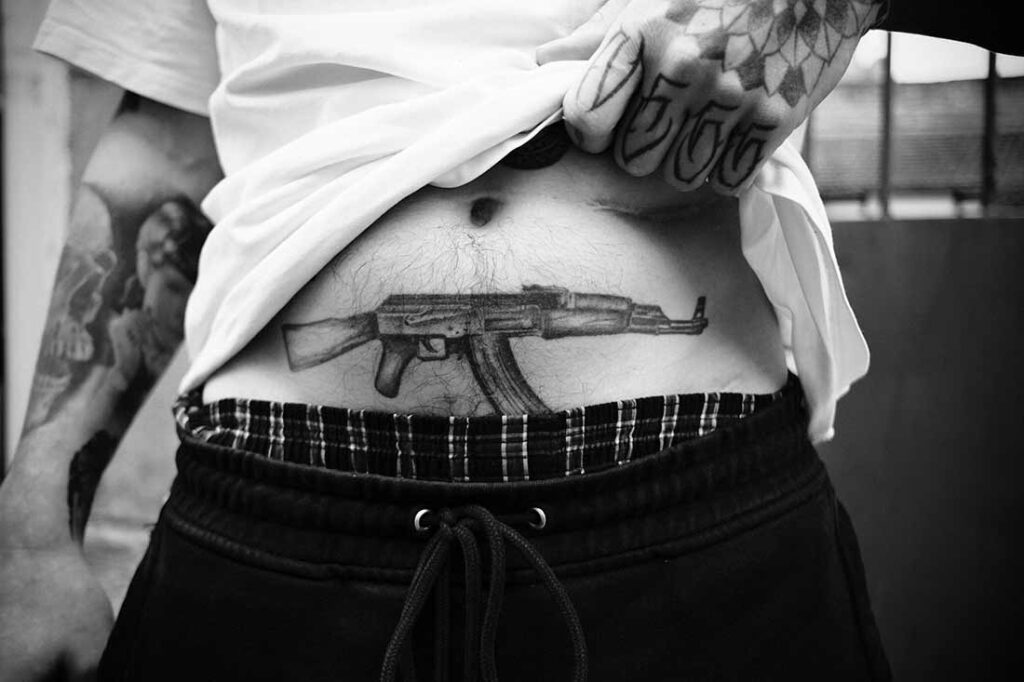
L. M: For documenting figures from gangs and underground reality, you should gain their trust. How did you start taking photos of this street culture, and what led you to focus on these gangs and the rough style of living?
B. G.: Definitely! Trust is the main thing; everything comes naturally when you go with the flow; you can’t plan it; like I always said, I document what I see. I photograph the truth and the world as it is, as nothing’s more interesting than reality. I am fascinated by everything around the street culture; I aim to take the viewer past the postcard shots or the street we actually see or know. So in some areas, gangs are part of the street too, like homeless, drugs addict, etc… they are in the shadow, but that is the sad reality of the street. Most people are afraid of this reality, and I am here to spotlight it and speak the truth.
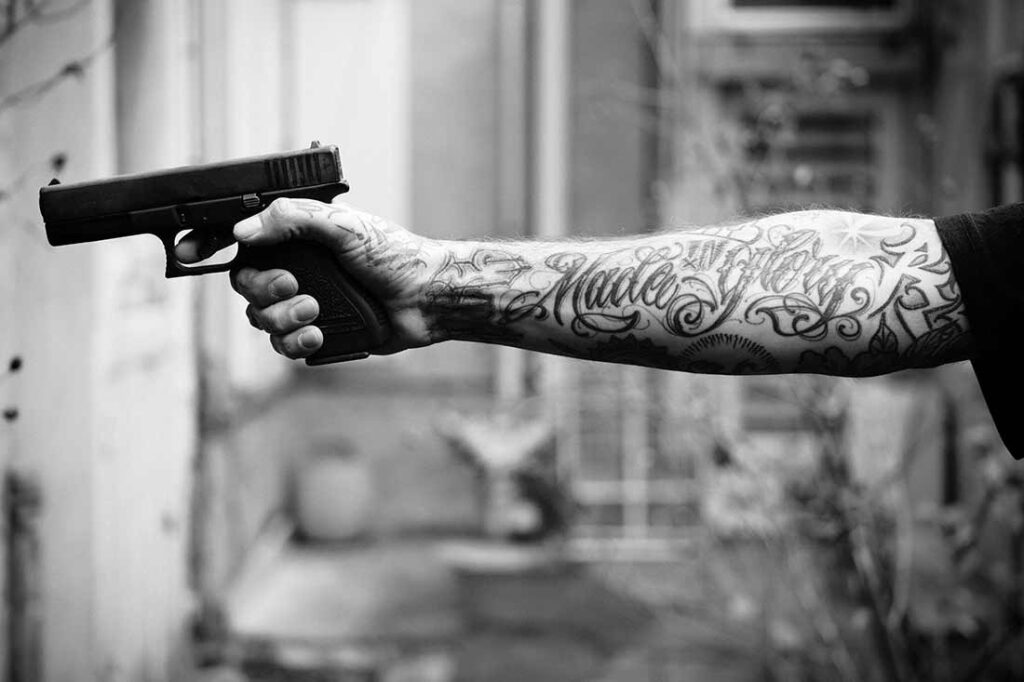
L. M: The streets have their own rhythm and their own life; how do you define the concept of “the beauty of the street” seen through the eyes of a photographer?
B. G.: I can find beauty even in chaos; the beauty in those neighborhoods is what I find in the heart of each resident; that’s my concept of the beauty of the street.
L. M: Can you share with us some of the personal stories behind these figures?
B. G.: Recently, I was in Napoli, Italy, to document and follow the path of the local Camorra mafia, one of the oldest and largest criminal organizations in Italy. I have been visiting Scampia, considered the biggest open-air drug market in Europe. I met this guy, a killer; he was paid around 2500 EUR per assassination; I also met his grandmother. She was part of the Camorra mafia when it all started. Spending time with residents is very important and exciting and brings you a better understanding of how the struggle is real and how they fight to survive in this world.
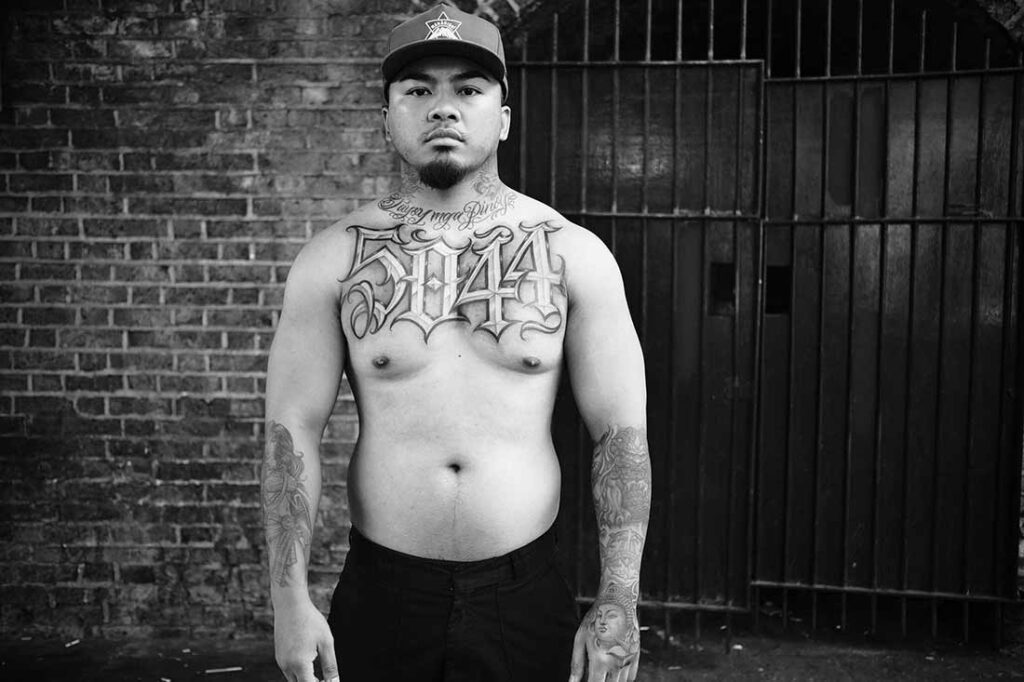
L. M: From the Humanitarian aspect, what changes and improvements do you wish to see happening in the streets?
B. G.: Respect and judgment. Before judging someone, take your time to understand the situation, why these homeless are on the street, and why this guy is a drug addict… spend time with them, and trust me, you will leave with a life lesson.
L. M: Why only in Black and White?
B. G.: When I started photography, it was only on film. I also learned the developing process in a dark room. I used Kodak film TMAX black and white and later moved on to Ilford HP5+ medium contrast black and white. I fell in love with the grain and the vintage look; black and white tell stories and express it all in a more emotional, dramatic, profound way.
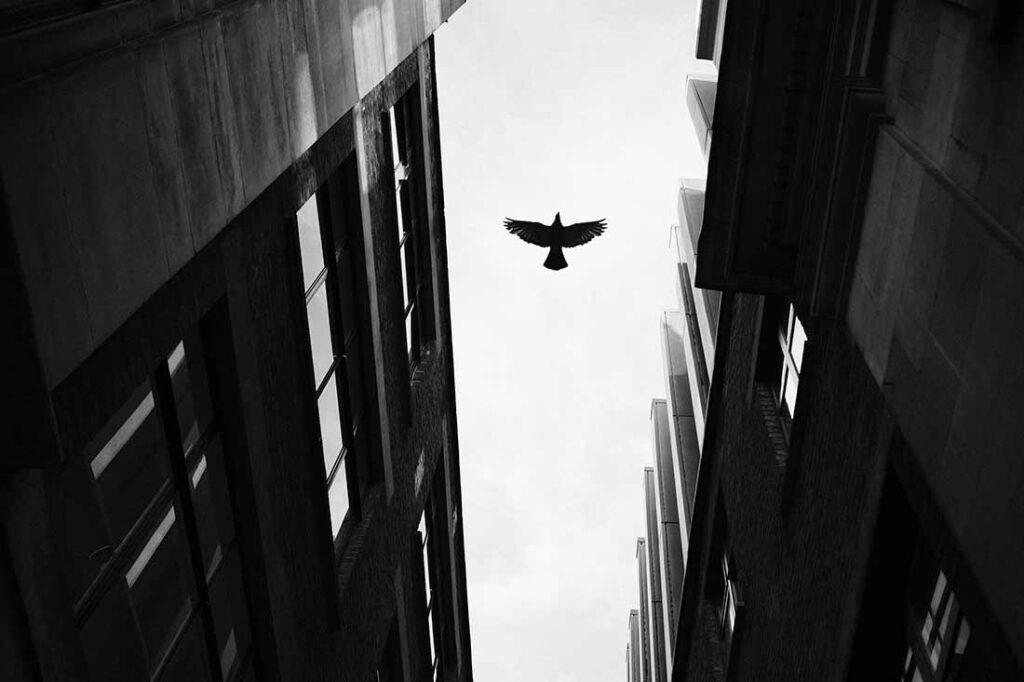
L. M: How do you perceive/feel the impact of the stories you stumble upon while you are out there and using your camera? Do they affect you in any way?
B. G.: Yes, they affect me deeply, but in a good way. I never had any negative experiences during a documentary project. It’s not only taking pictures and documenting something;
it’s all about respect for the figures and subjects and spending time with people all around the stories. Taking a photo takes me 1 sec, but behind this picture, it’s deeper than that; I can spend a whole day, week, or more. I immerse myself in this lifestyle; sometimes you make friends and personal connections… but in the end, it allows me to meet many well-known beautiful people, and I am thankful for that.
“It’s not only taking pictures and documenting something; it’s all about respect for the figures and subjects and spending time with people around the stories.” – Brice Gelot
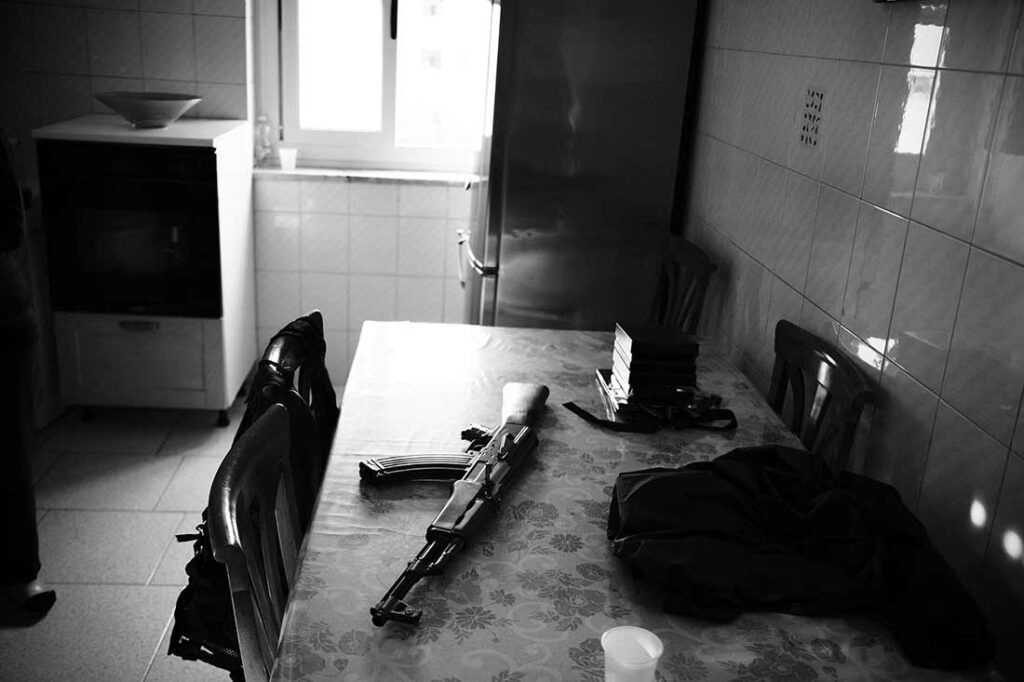
L. M: What is your favorite camera and lens when you go out in the street?
B. G.: I work with Fujifilm cameras XT4 and XH2, and my fav everyday lens choice is the Fujinon 35mm.
L. M: Once back home, what is your pictures’ process going through until they are “good to go” and ready to be uploaded on your website or Instagram?
B. G.: I don’t photoshop my picture. What you see is what you get. I don’t take a lot of photos like an obsessed person; I go straight to the point. Same with a portrait, it takes me 30sec, one click, and that’s it. I know what I want, I prepared the idea in my mind, and I know what can be possible.
The picture is already in my head before I push the button. You know the phrase, “quality over quantity,” This is absolutely true.

L. M: If you could start all over again, and if it won’t be a street photographer, what else would you be instead?
B. G.: I still will be a street photographer; I was born for this shit. I live for photography, which will be in my bloodstream until the end.

